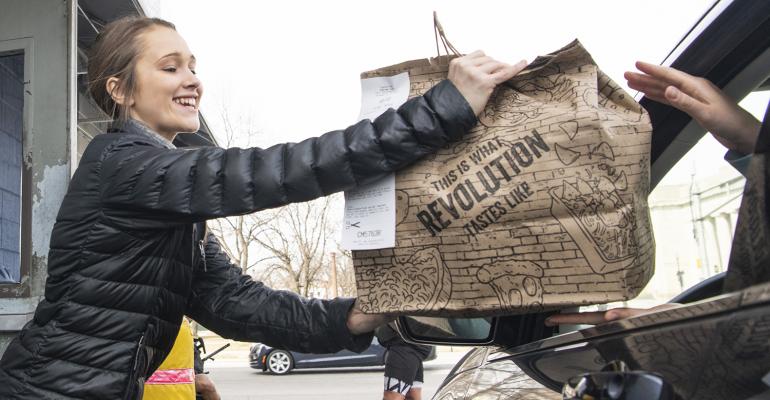In the post-pandemic era, multiple digital technology solutions companies have been popping up, merging with other brands, and receiving funding. Former Yum Brands and Kitchen United executive Meredith Sandland joined forces with Chris Baggott, CEO/cofounder of delivery-only restaurant, Clustertruck, to carve out a niche in the world of restaurant tech startups with Empower Delivery.
The new company offers a vertically integrated tech stack solution specifically designed for ghost kitchens and virtual restaurants with capabilities like smart decision-making for back-of-house optimization and a driver dispatch app.
These days, tech solutions companies fall into two camps: task specialization or — as more and more companies are starting to become — end-to-end solutions. While specialized solutions can help ensure that operators are receiving the best possible software for a specific need (like loyalty programs or delivery/takeout integration), end-to-end solutions are usually easier to manage, with software that easily speaks the same language across all channels.
“Having resource awareness across different raw materials, different functions in the kitchen, different stations, driver dispatch, and customer service holistically together and aware of one another is what enables the system to optimize an outcome for the customer on the other end,” Sandland told Nation’s Restaurant News. “In many ways, virtual restaurants have been innovating and evolving faster than the tech that supports them. And they’re now trying to get 15-20 pieces of tech in their tech stack work together.”
Sandland and Baggott have been working on reducing these 15-20 necessary components of a tech stack down to just a couple, with their company at the forefront, translating data and input/output between the customer, the restaurant kitchen and the delivery driver.
The idea for Empower Delivery began in the primary stages of development for Clustertruck. Baggott wanted to create a vertical tech solution that made operations easier and more efficient for delivery-focused restaurants. The only problem? Back in 2015, when he was developing the concept, ghost kitchens were only in their nascent stages, so he was solving a need that did not really exist yet. Instead, Baggott plugged his software into the back end of Clustertruck: a virtual food hall that opened in 2016 with delivery driver partners and proprietary kitchen management software.
Eventually, Baggott returned to the idea of focusing on developing and licensing his software solution for operators outside of Clustertruck. Meredith Sandland began to get involved as an investor in Clustertruck and a partner with the yet-to-be-launched Empower Delivery in March. The software came to fruition a mere four months later.
“Having 15 to 20 different pieces of software doesn't really make sense for anyone, particularly for independent restaurants,” Sandland said. “[…] With all these different companies making acquisitions, there's consolidation in this space. [...] The first time I walked into a Clustertruck I thought, ‘Wow, they're making the thing I’ve been writing about that the restaurant industry needs. They’re already doing it!’”
The ”thing” Sandland is talking about is really a tech stack that neatly combines a few different capabilities that all ghost kitchens or delivery-centric restaurants need: a driver dispatch app, first-party ordering, and integration with loyalty and third-party ordering. One of the biggest selling points, Baggott said, is the software’s smart decision-making power. The system can make decisions on the fly based on ingredient availability, how busy the kitchen is and driver availability.
“When you place an order, my machine will be able to tell you how long it will take with 97% order accuracy,” Baggott said. “The machine knows your food is going to take six minutes and you’re a five-minute drive away. But in the case of not having enough drivers or kitchen capacity, we put your order in the cloud. Then the system will decide, ‘Ok, now we have enough capacity now to make and deliver your burrito.’ And that’s the difference between just integration and an enterprise-built system.”
Moving forward, Clustertruck will continue to operate as a virtual food hall and multiunit restaurant group, while Empower Delivery will be utilized as the software arm of the company in a SaaS model.
Contact Joanna at [email protected]
Find her on Twitter: @JoannaFantozzi





